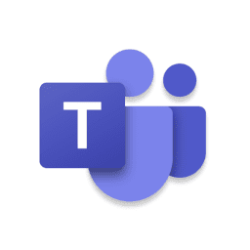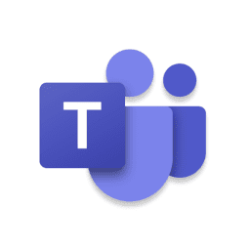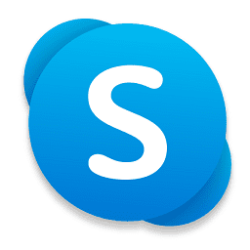Microsoft Teams Blog:
Successfully navigating a fast-paced workplace requires teams to collaborate closely and share the same information. Channels facilitate this by bringing people together for common functions, projects, or interests. Designed for enduring collaboration, channels maintain their structure and purpose, even as members change, ensuring organizational continuity, transparency, knowledge sharing, and the preservation of vital conversations and decisions.
When setting up a channel, you can choose from three channel types, standard, private and shared, enabling you to bring in the right collaborators while controlling access to shared resources and avoiding oversharing, without needing to create multiple similar teams. We also expanded the limit of the number of channels in a team to 1000, so you can manage a large project in one team.
However, channels' persistent nature and scalability can present usability challenges if not managed as priorities and projects shift. Disorganized, redundant, or outdated channels can hinder finding relevant conversations, detracting from their role in supporting effective communication and collaboration.
We are investing in enhancements that will streamline how people work and collaborate within channels from start to finish. These improvements will make creating and joining teams and channels quick and straightforward, allowing for efficient workspace setup. Collaboration within channels has been enhanced, helping everyone to stay on top if the information that matters most and contribute effectively. Additionally, retiring channels that have served their purpose will help maintain focus on current, relevant channels, reducing clutter. Our new channel related features aim to minimize distractions, simplify information retrieval, and foster effective collaboration.
Create and join teams and channels with ease
Channels are the hubs for teamwork within a team, allowing for more targeted discussions and collaboration. We have reduced the number of steps needed to create a new team by defaulting to “create a team from scratch”. If you would like to create a team from a template, select more create team options” and pick from the template library. This is generally available.
Not every collaboration requires a new team. So, we’ve made it easier to create a channel from the same menu you use to create a new team. Now you can avoid creating unnecessary team structures and clutter when you only need a channel. This is generally available.

Lack of awareness of existing teams can lead to duplicate teams being created. Users are now able to discover public and private teams and join them as needed. Admins can now use a new setting to control whether users can find private teams or not. The new experience combines privacy and collaboration, empowering admins to ensure that only the right people can request access to private teams, without compromising security or control. This is generally available.

When joining a team, you will be able to select to show only the channels that are relevant to you, including from the channels the team owners have recommended. This will help you easily organize your list of channels to prioritize those you care about most, helping filter through the noise. This feature will be generally available in by end of year 2024.

Collaborating with channels effectively
When you have many channels across teams, it can be hard to keep track of all of them. Discover feed is a personalized, AI powered feed that surfaces the most relevant content in channels that you are not showing in your channel list. The discover feed surfaces channel posts you might otherwise have missed, bringing relevant content based on people you work with or topics that might interest you. Scroll through your feed, easily catch up on news, and like, comment, or share a post from the discover feed, just like any other channel post. Discover feed is generally available.
To allow for a more organized and personalized channel list, select to hide or show the general channel of a team, just like other channels. By hiding less relevant channels you can declutter your channel list. Hide general channel is generally available. Coming later in the year, team owner will be able to rename the general channel to a name that better reflects the purpose of the channel for everyone in the team, helping you navigate your channel list with greater ease.

Is your teams and channel list cluttered with channels you do not have interest in? Teams will automatically detect inactive channels you haven’t interacted with over the past 45 days, and automatically hide them for you. You have the option to review the list of channels and keep showing some or all of them, or opt out of automatic clean-up. This feature will roll out in Q3 calendar year 2024.

Notification settings experience is streamlined to allow better customization, enabling you to tailor it to your needs. You can choose to see your notification in the activity feed, display a banner, or turn them off. In your activity feed, you are now able to clear notifications with a single click, marking all your notifications as read at once, helping you keep up with the quick pace of conversations and notifications. These features are generally available.

Soon, you will also have the option to mute all notifications for a specific channel post. You can also customize the sound of your notifications to help you stay focused, prioritize quickly, and avoid distractions. Assign different sounds to different kinds of notifications, such as urgent messages. Or mute notification sounds when you are busy or in a meeting. This will be rolling out during Q2&Q3 calendar year.

Invite your colleague to participate in a discussion by sharing a link to the channel, a post or a reply. This way, they can navigate more easily and faster to specific content and conversations, without searching through many messages and files. This is generally available.

Retiring channels to reduce clutter and improve focus
When active collaboration in a project ends, but you need to keep the collaboration context for future reference, channel owners and administrators can archive a channel they own or manage. When archiving, you are turning off the option to have additional conversations and hiding from the channels list, for channels that are no longer used or relevant. Archiving a channel preserves channel content, including messages, files, and tabs, but removes it from the active list of channels in your or channel members’ left rail. Once a channel has been archived, actions such as messaging, reacting, commenting, are no longer available. In the event you need to revive an archived channel, you can restore the channel from the “Manage teams” menu. Archive channel is generally available.
Get more from your Teams channels
Channels are where teamwork happens, bringing internal and external members together to collaborate and share. Take advantage of these tools to help manage your channels across the lifecycle, for improved focus, connection, and productivity.Learn more about channels in Microsoft Teams, and keep watching this this blog for additional features and strategies to help you get the most from your Teams channels.
Source:

New capabilities to help you manage Microsoft Teams channels from creation to archival
Successfully navigating a fast-paced workplace requires teams to collaborate closely and share the same information. Channels facilitate this by bringing..
techcommunity.microsoft.com






















